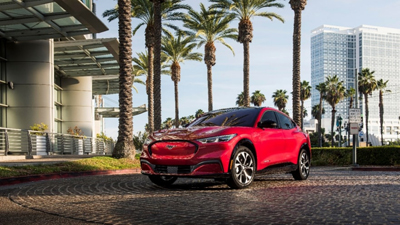Ford on Feb. 15 announced a series of changes and design goals it will be implementing to increase profitability and improve its EV offerings.
Ford’s Q4 earnings report highlighted two major weak points for the company: profitability and quality control. Despite a strong demand for many of its vehicles, particularly its electric offerings, the company saw declines in those two key areas.
To battle these shortcomings, Ford CEO Jim Farley and his team of executives announced a series of changes they hope will revitalize the brand.
According to Reuters, the vast majority of efforts will be aimed at achieving an 8% profit margin on Ford’s next generation of electric vehicles. Compared to rivals, Ford believes it is down by roughly $8 billion in costs, easy to imagine considering the company’s massive $50 billion in planned spending towards electrification.
Planned cost-taming measures include improving the management of production scheduling, which Ford said could reduce expenses by $2.5 billion alone. Further, thanks to the commodities market finally beginning to cool, Ford is poised to see a decrease in vehicle production costs.
More specifically, regarding electric vehicles, Ford aims to produce its new LFP batteries for less than $70 per kWh, a massive leap compared to the NMC batteries Ford currently relies on. The Blue Oval will also be working to reduce battery sizes while maintaining range, thanks to aerodynamics technology it hopes to garner from the company’s new F1 team.
“Why do you think we are doing Formula 1? Because they have the best aero people in the world,” Farley said.
Ford will also be adopting a technology that has aided Tesla in its efforts to lower costs: large underbody castings. While the company was not specific regarding which vehicles would be receiving these new castings, they could likely be implemented within the next generation of many of its models, and the upcoming SUVs and trucks that Ford said have finalized designs.
Ford executives maintained changes are still coming to its dealership model. Reduced inventories and an increased reliance on online ordering will cut down on costs, further improving profitability. Ford will also be able to implement more changes to manufacturing, supply chain and distribution operations.
Ford’s plan of slimming down offerings and improving manufacturing sounds similar to Volkswagen’s initial electrification strategy put in place by the now departed Herbert Diess. However, unlike Diess, Farley has the backing of his executives and board members, including Bill Ford, who said Farley’s new plan will be “a full court press,” something he believes the company desperately needs.
Ford is at a pivotal point in its history, but it has proven time and again it can endure and succeed. Hopefully, that will be the case with electrification, and perhaps, it will lead to faster electrification of the industry overall.














